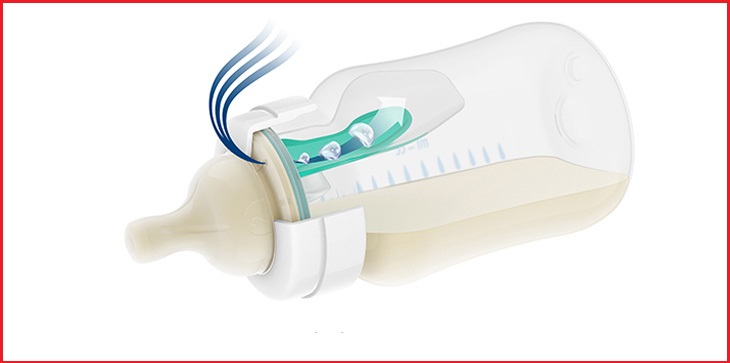You are viewing the article What is choking milk in babies? When should an anti-colic valve (ventilation valve) be used in a child? at Tnhelearning.edu.vn you can quickly access the necessary information in the table of contents of the article below.
Choking on milk is dangerous for babies if not detected in time. So what is the cause and how to deal with it? When should an anti-colic valve (ventilation valve) be used in a child? Find out in the article below!
Reasons why babies often choke on milk
Choking milk in babies is a common and quite dangerous condition because then milk can overflow into the airways, causing stuffy noses and trachea, the baby will have difficulty breathing leading to many dangerous complications if not detected. timely treatment.
It is not natural for children to choke on milk, but often because adults are subjective when breastfeeding, you should learn some causes of children choking milk to prevent.

- Improper breastfeeding position: If you let your baby suckle when the baby’s neck is too bent or too back, it will be difficult for the baby to swallow, so it is easy to choke on milk. The correct position is that you hold your baby at an angle of about 45 degrees, you should sit on a chair with armrests so that you do not get tired when your baby sucks for a long time.
- Forcing the baby to suck too much: Due to the fear of the baby being underweight, adults force the baby to suck a large amount of milk at one time. The baby is too full to refuse to swallow milk, so it is easy to choke.
- Babies have the habit of eating and sleeping at the same time: The pacifier makes it easier for the baby to fall asleep, but in the dream state, the baby does not swallow milk but holds it in his mouth. When babies breathe fast, they can inhale milk up their nose into the trachea, bronchi and cause choking.
- Put the baby to lie down immediately after feeding: After a baby’s stomach is full of milk, it is easy to spit up. The baby spits up in the supine position, causing milk to overflow into the nose, causing choking and suffocation, which is very dangerous. Ideally, after the baby sleeps, you still hold the baby in the high position, burp for about 15 minutes and then put the baby on his side to prevent choking.
- The nipple is far away: The baby takes a bottle but the bottle is far away, making the baby’s mouth not fully latch on to the nipple, so it is easy to swallow a lot of air, causing the baby to be full and vomit after feeding.
- Other causes: The baby is sucking but loses concentration, laughing or coughing suddenly causes milk to overflow into the windpipe causing choking. The perforated nipple is too large, causing a lot of milk to flow out, which can also cause choking. Hungry babies who swallow milk in a hurry can also choke.
How to handle choking milk in babies
When you discover that your baby is choking on milk, you should not panic, but take the following steps:
– You use your mouth to suck the milk out of your mouth and nose to clear your baby’s airway immediately. You suck your mouth first, then your nose.
– If the baby is still having trouble breathing, turning pale, you turn your baby upside down, pat him on the back 5 times continuously in the position between the shoulder blades to create pressure to push the milk out (note to use moderate force, not too strong). .
– If back patting still doesn’t work, turn the baby upside down and place it on a flat surface, use two fingers (index and middle fingers) to press suddenly between the lower half of the baby’s sternum, repeat 5-10 times until the baby can breathe normally.
After the baby breathes again, you immediately take him to a medical facility for treatment.

Should an anti-colic valve (ventilation valve) be used to prevent choking in infants?
With bottles without vent valves, when the amount of milk is low or the nipple is deflated, the baby must release the bottle to let the nipple return to its normal state before continuing to suckle. into the bottle to create air bubbles. Repeatedly like that, the baby is both tired and easily choked. Then, using a bottle with an vent valve will help overcome this.
Specifically, the anti-colic valve is designed separately or integrated on the bottle and has the effect of bringing air from the outside into the bottle without forming air bubbles.
The pressure inside the bottle is balanced to push the milk out stably, helping the baby to suckle without fatigue and at the same time not swallowing air bubbles that cause gas, bloating, vomiting, and choking.

Hope the above article will help you in the process of taking care of your baby!
Thank you for reading this post What is choking milk in babies? When should an anti-colic valve (ventilation valve) be used in a child? at Tnhelearning.edu.vn You can comment, see more related articles below and hope to help you with interesting information.
Related Search:



